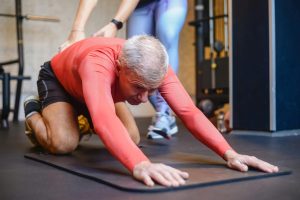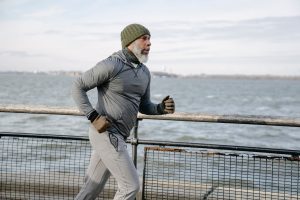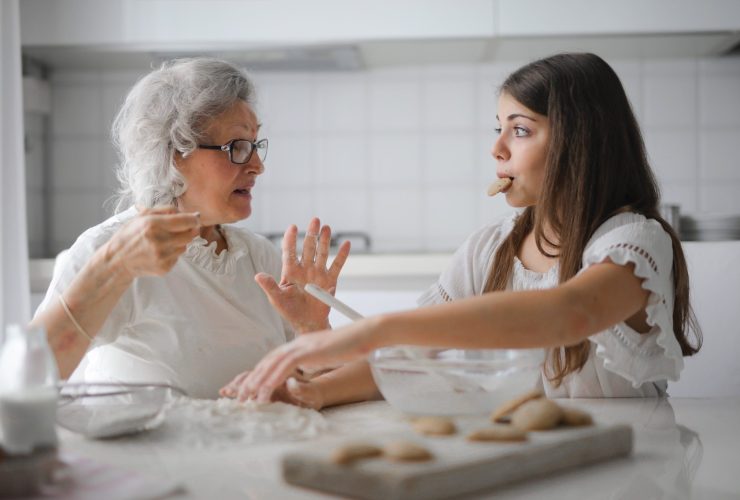According to Havard Health, regular exercise is the single most important thing someone can do for their health. Exercise can lower the risk of a variety of conditions, such as heart disease, depression and cancer, but can also benefit other areas of your life such as your general mobility, mood and appetite.
Not only is exercise itself beneficial, but it also affects other healthy habits, such as diet and sleep. When you’re regularly moving your body you are much more likely to reach for health options because your body craves adequate nourishment, and movement and a good diet is a lot more likely to lead to more shut eye! All of these benefits are sure to have a major positive impact on your mental health, so, let’s get into some best practices for how to make exercise a part of your daily routine.
Seek Advice
While it’s true that exercise is good for everyone, if it’s not something you’re already comfortable with, or if you’re already living with a medical condition such as diabetes or COPD then it’s always a good idea to first seek out the recommendations of your doctor or another medical professional. It’s not that you won’t still be able to exercise, but there may be certain modifications you can put in place to ensure you are exercising in the safest and most beneficial manner possible.
For those just starting out, it might also be worthwhile to consider hiring a personal trainer, especially one who is used to working with seniors, or with those who are dealing with serious medical conditions. A certified personal trainer will be able to tailor an exercise program specifically for you and your needs, which will help you reach your goals faster than if you are seeking out exercise information on your own. Trainers can also make sure you’re using the proper form when performing weight-training exercises, which can help cut down on the possibility of injuries.
Get Moving
One of the hardest parts of exercising is getting out the door, or actually turning on that exercise tape, and this can be especially true for seniors who are really struggling with poor mental health. However, when it comes to exercise, it is entirely up to you whether you do it or not. Thankfully, there’s no need to suddenly jump into an hour-long workout. In fact, the Mayo Clinic suggests you start slowly, and, once you are more comfortable with regular exercise, you can work your way up to longer sessions.
Of course, the goal is to get up to the minimum recommendation of 150 minutes of moderate exercise, or 75 minutes of vigorous exercise a week, as outlined by the American Medical Association, but if you’re going from a fairly sedentary lifestyle to one of activity, then any amount of exercise when you’re starting out is going to be beneficial.
Start Small
The best type of exercise to do is a type you can stick with. While we’ll get more into different types of activity later in our next tip, the best thing you can do when starting out is to find convenient ways to add more activity into your everyday life. For example:
- Take the stairs. If you live in an apartment on the second or third floor, or are faced with a choice between stairs and an escalator, taking the stairs can be an excellent way to add a bit of exercise to your routine. Of course, this is dependent on whether or not stairs are a safe option for you and any preexisting medical conditions.
- Park a few blocks away from appointments, or get off the bus one stop early. Again, this is a great way to add a bit of exercise into your day without having to think about how to add an extra hour into your schedule.
- Plan an outing with a friend that involves going for a walk. Instead of opting for a sedentary outing, invite friends out for a walk or maybe even to an exercise class.
- Stretch during commercial breaks. If you’re watching your favorite show, use the commercial breaks as an opportunity to get a bit of exercise in. That way you’re not disrupting your schedule, and getting a benefit from all of those ads!
Get to Know Exercise
There are four main types of exercise that you will likely hear mentioned when embarking on your fitness journey.
Strength Training
Strength training, also known as resistance training, is exercise that builds up muscle mass, something that is particularly important for seniors who see a natural decline in muscle mass as they age. Strength training can be achieved through exercises that use body weight, resistance bands, medicine balls, weight machines and of course, classic dumbbells. This type of exercise can make a lot of tasks, like carrying groceries or lifting a your carry-on bag into a plane’s overhead compartment, a lot easier.
Aerobic Exercise
Aerobic exercise is high-intensity training that increases your heart rate and breathing. Aerobic exercise has a host of benefits including lower blood pressure, weight loss, improved mental health and better cholesterol levels. This type of exercise might include activities such as running, swimming and dancing.
Balance
Balance exercises are built into a lot of other forms of activity, but, depending on your needs, you might want to have some exercises that are specifically designed to work on your balance, such as a toe stand or lunges. Balance exercises are beneficial for everyone, but are especially useful for helping to prevent the risk of falls in seniors.
Stretching/Flexibility
While working on your flexibility might not be the first thing that comes to mind when thinking about your exercise routine, it’s a crucial part of our everyday function. Flexibility helps us move through the world with ease, whether that’s bending down to pick something up that we’ve dropped, or doing a shoulder check when driving down the road. Adequate stretching and flexibility exercises can also reduce the chance of injury when doing other types of physical activity.
It’s helpful to know the different types of exercise so that you can be aware when something is missing from your routine. It’s totally natural to have a preference for one type of exercise over another, but it’s important to find ways to incorporate all the versions into your schedule so that you get the best results long-term.
Have Fun
If you’re serious about committing to an exercise routine to improve symptoms of anxiety, depression, and other mental health concerns, then one of the best ways to do so is by finding a type of exercise that you actually enjoy doing. As outlined in an article by the Muscle Clinic in Plymouth, enjoyable exercise can take many forms, such as archery, surfing or rock climbing. As societal understanding of the importance of exercise has grown, so have the offerings. There is no shortage of exciting physical activities to try, you could enjoy kayaking, yoga, pilates, chair exercise, walking clubs and more. Several places offer introductory packages to fitness programs, so you can get an idea of what feels good in your body before you commit to something. Many gyms also feature a variety of different exercise programs each week, so you can get aqua fit, pilates and bootcamp classes included all at the same price.
Many people find they don’t need to sign up for a fitness membership, and instead find joy in exploring local parks and outdoor spaces. There are also lots of clubs that support runners, walkers, and hikers of all fitness levels, which is a great way to build up your activity level while also establishing a community of people that can help you with your fitness goals.
It can be a challenge to get out the door for a workout, but it shouldn’t feel like a punishment. There’s no need for exercise to feel serious or uncomfortable, so try out different things until you find the right fit for you. Maybe that’s turning on music and dancing for 30 minutes, or it could be playing games outside with your grandkids. Any type of movement is good movement, and if you enjoy it then you’ll be a lot more likely to continue doing it long-term.
Build a Routine
While some people like being spontaneous with their workouts, for many others it can be very helpful to schedule specific times for exercise. While the time it takes to actually form a new habit varies from person to person, Scientific American says that the best way to build and maintain a habit is by making it a daily ritual. This might mean you plan a walk every morning after breakfast, or go to a yoga class every day at noon. It could even mean committing to 10 minutes of stretching every day, that you then supplement with different types of exercise.
If you choose to build scheduled exercise into your daily routine then it’s also a great opportunity to introduce other healthy habits, like good diet and sleep routines. However, make sure you don’t start with too ambitious a goal. While you can certainly build on your habits, you don’t want to go from 0 to 100 otherwise it might be too hard to stick to. Adding a veggie to your lunch and going for a 10 minute walk each day is much more manageable at the beginning than suddenly aiming for a 10 mile run and a completely vegetarian diet!
Little Differences Lead to Big Changes
You don’t want to go too big too fast, especially if you’re starting from square one. It can be tempting to want to aim for the stars, but if you commit too much too fast it is much more likely to lead to burnout and/or injury. Trust that you will see the results you want if you remain consistent on the little things. A walk around the block can lead to a walk around two blocks, 2 pounds can build to 5, and so on. Remember, any amount of activity, especially an increase, will be beneficial to your health.
Have Workout Buddies
It’s easy to cancel on yourself. You said you’d go to a yoga class, but there’s no cancellation fee and the sofa looks so comfortable, but it’s a lot harder to cancel on a friend! Having friends who you workout with not only makes exercise more enjoyable, but it also helps to keep you accountable. Check in with friends to see if someone wants to commit to a fitness program, or maybe you could even split the cost of a trainer. If you don’t know anyone who’s interested in joining you for a workout then you might seek out a local fitness club, or speak to someone at a senior’s center. There are sure to be many other seniors who are looking to make the same changes you are and would be delighted to build a friendship based on forming healthy habits.
You might even start planning vacations or evenings out around fitness. Perhaps you go to a salsa dancing night, or take a group vacation where you go hiking during the day. There are so many ways you can incorporate exercise into a fun and exciting life. You get to have fun and feel good while doing it!
Track Your Progress
When you start building workouts into your daily routine it can sometimes be difficult to see the progress you’ve made. That’s why tracking your fitness can be a useful tool to show you how far you’ve come. There are lots of different fitness watches and apps, or you could write down your workouts in a journal. Seeing how long you walked, or how many pushups you are now able to do, compared to when you started, can be incredibly motivating. The use of fitness apps can also be something you do together with friends. You can challenge each other to complete a certain amount of workouts, or walk a set number of sets. Maybe you even buy a prize for the winner, or simply all go out to celebrate when you’ve completed your challenge. Goals can be a great motivator and completing tasks, so sometimes a fitness tracker can help you take those few final steps in a day, even when you were tempted to open a bag of chips instead.
Finally, it’s important that you always be kind to yourself. Building new habits (and muscles) takes time, so don’t get angry if you skip a day, or don’t feel as motivated from one day to the next. Take it slow, find some workout partners, and the kind of movement you like, and slowly but surely you can build up a routine that is good for your body and your mind. Improving your mental health is not something that can happen overnight, so if you go into your fitness journey with the knowledge that some days will be easier than others, then you will be much better set up for success. Good luck, and enjoy all that moving and grooving!









